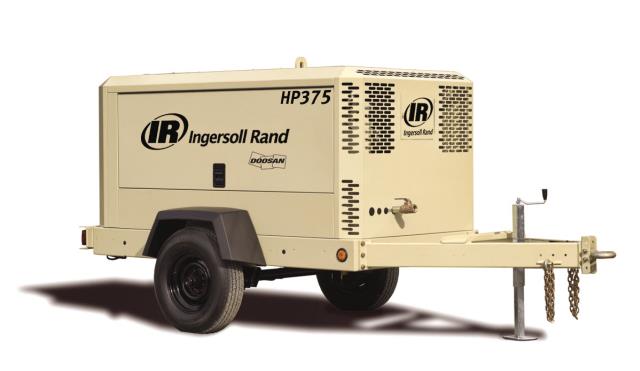
The snow-capped peaks of ski resorts are a winter wonderland for outdoor enthusiasts. However, the magic of these slopes relies on one crucial element: snow. While it may seem that ski destinations are perpetually covered in natural snow, the reality is that ski resorts often face unpredictable weather conditions.
To ensure that the slopes have enough snow for good conditions, ski resorts turn to the science of snowmaking, where air compressors play a vital role in transforming water into the fluffy white powder we all love. In this article, we explore how to make fake snow with air compressors, the benefits of artificial snow, and the advantages of renting an air compressor for snowmaking.
How do Air Compressors Work?
Before diving into the world of snowmaking, let’s first understand the fundamental function of air compressors. At their core, compressors are machines that take in air at atmospheric pressure and compress it, resulting in a high-pressure stream of air. This compressed air can be used for various applications, from powering tools to inflating tires.
How is Snow Made With Air Compressors?

The basic idea behind snowmaking is to convert water into artificial snow by using compressed air.
First, a water supply, typically from ponds or reservoirs, is pumped to the snowmaking machines. These machines are equipped with high-powered air compressors. As the water moves into the machine, the air compressors generate compressed air, which is mixed with the water. The combined air and water mixture is then forced out of nozzles or snow guns, high into the cold air.
Here’s where the magic happens: freezing temperatures cause the fine mist to freeze and form snow crystals. These crystals continue to grow as they fall to the ground, creating the snow that covers ski slopes. This technology allows ski resorts to provide quality skiing experiences even when Mother Nature doesn’t cooperate.
What Are the Conditions for Artificial Snowmaking?
For snow to form efficiently, temperatures must be consistently below freezing. However, the critical factor is the wet bulb temperature, which considers humidity. Wet bulb temperature helps determine if the air is cold and dry enough for efficient snow production. Lower wet bulb temperatures indicate favourable conditions for making artificial snow.
Can It Be Too Cold to Make Artificial Snow?
While extremely cold temperatures are generally favourable for snowmaking because they support efficient snow production, there is a point at which it can become too cold. When the temperature drops to extremely low levels, typically below about -29°C (-20°F), making artificial snow can become challenging.
At these frigid temperatures, the moisture in the air freezes almost instantly, resulting in very fine ice crystals rather than the desired snowflakes. These ice crystals are often too small and too light to provide the ideal skiing or snowboarding conditions.
Why Ski Spots Use Air Compressors Instead of Waiting for It to Snow

Control: Creating Winter Wonderlands
One of the significant advantages of artificial snow is the control it offers to ski resorts. With air compressors, resorts can efficiently produce snow on-demand, ensuring they’re ready for the ski season. This precise control extends beyond mere snow production; it allows resorts to make snow in sufficient quantities to create features like terrain parks, jumps, ramps, and halfpipes, as they look to provide great experience for skiers and snowboarders of all levels.
Convenience: Skiing on Your Schedule
Artificial snow brings an essential element to the ski industry: convenience. Ski resorts can operate according to their preferred schedules, irrespective of unpredictable weather patterns. While natural snowfall can be fickle, arriving late or in insufficient amounts, artificial snow remains dependable and allows resorts to get the jump on ski season. As a result, skiers can confidently plan their trips, knowing that when they arrive at the resort, nicely groomed slopes await.
The Advantages of Renting Air Compressors for Snow-Making

Renting air compressors for making snow offers numerous benefits to ski resorts. It provides a cost-effective solution, allowing them to access the necessary equipment without the substantial upfront investment of purchasing air compressors.
It also offers flexibility. Resorts can adapt their equipment to changing needs. For instance, they can easily scale up or down depending on the ski season’s demands.
Another benefit of renting air compressors from reputable providers like Rentco is peace of mind that comes from knowing the equipment you rent is high-quality and well-maintained, leaving you free to focus on creating the perfect conditions for skiing.
Rentco – Your Partner in Making Ski Season a Success
In the world of skiing and snowboarding, having enough snow can make or break a season. Air compressors are the unsung heroes behind the scenes, making sure that snowmaking machines can deliver.
As ski resorts gear up for the season, they must consider every detail, including their snowmaking equipment. As a leader in heavy equipment rentals and information resources (like our heavy equipment maintenance guide), we at Rentco understand the importance of reliable air compressors in creating the perfect slope. That’s why we offer high-quality equipment rentals and flexible terms so that you can make this ski season a success. Contact Rentco today to learn more!